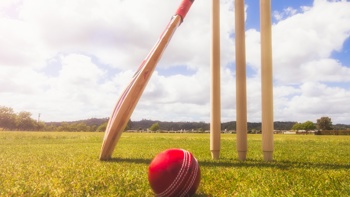
Hundreds of New Year festival-goers have reported alarming symptoms – including paranoia, seizures, severe nausea and inability to sleep for days – after taking chemicals sold to them as MDMA, or ecstasy.
The wave of bad reactions may be yet another consequence of the disruption caused by the Covid pandemic.
The reports, nearly 1000 so far, have come in messages to the harm reduction service Know Your Stuff.
"I was lying in bed thinking I might die in my sleep but I was too scared to move and get help," reads one message viewed by the Herald.
Another reported a severe panic attack on the road home from a festival – necessitating an ambulance callout – and several reported suffering hallucinations even after being discharged by hospital emergency departments. At least one reported the urgent involvement of mental health services.
Another group of messages thanks Know Your Stuff for the warning it issued on December 29 about eutylone, the substance believed to be responsible.
Inspector Blair MacDonald, manager of the National Drug Intelligence Bureau, confirmed to the Herald that "this festival season has seen an increase in the detection of eutylone", a synthetic cathinone, adding that while there were likely to be a range of reasons for the increase, "the impact of Covid-19 on the international drug market has seen MDMA less readily available in New Zealand".
Many of the reports have come from events the service was unable to operate at, including two of the biggest: Rhythm and Vines and Northern Bass.
Know Your Stuff's drug-checking activities were formally legalised before Christmas, but the law change left the organisation without the resources to cover events that now felt comfortable inviting the group on site.
/cloudfront-ap-southeast-2.images.arcpublishing.com/nzme/DPZURZTVXWPGEASD77ADYBIIVM.jpg?width=824&height=549&mode=max)
New Year revellers at Northern Base. Photo / Ron Burgin
Know Your Stuff director Wendy Allison said cathinones had been picked up in the group's testing in previous years, but at one New Year event where the group provided drug-testing services, more than half the samples tested were synthetic cathinones. By comparison, last summer the group found more than 80 per cent of samples presented as MDMA were what they were meant to be.
"The vast majority of that has been eutylone," Allison said. "There's been a few other things, but 99 per cent of it has been eutylone. It's just everywhere."
Know Your Stuff had picked up a sudden rise in detection of eutylone at testing clinics it ran late last year, she said, but "it wasn't 'til we got to the festivals that we realised that we had vastly underestimated how bad it was going to be".
Know Your Stuff's warning, which was republished on the police-operated High Alert website, does appear to have had some impact. Shops selling reagent tests – which can identify cathinones so long as they have not been mixed with real MDMA – swiftly sold out. Some festival-goers reported testing and then disposing of their party drugs and others followed the advice to not take any substance that couldn't be tested. But many others went ahead. Several agreed to speak to the Herald.
"Dave", 21, who went to Northern Bass, said he had bought what he was told was MDMA from a former schoolmate: "I asked all the usual questions and he said, 'yeah yeah, it's all good, I've tested it'. I figured he wouldn't be one to lie to me."
He had a sign that was not the truth on his first night staying near the festival site, when he tried some and "I didn't get a single minute of sleep. I was awake and fidgety and my gut was really sore, but at that point I thought maybe I'd just had too much or I hadn't been eating properly".
Unsure if the drug had caused the symptoms, he had more on successive nights and felt much worse. He did eventually manage to sleep after New Year's Eve: "But I slept on my front because I was scared I was going to vomit and choke in my sleep. If I'd been around medics at that point, I definitely would have gone."
It wasn't until he saw users' stories posted by Know Your Stuff that he realised what had happened to him. MDMA and other party drugs were "always going to be there", he said.
"But based on my experience, I'll never touch anything again that I haven't tested. It made me feel so sick for so many days. It's just not worth it. If [Know Your Stuff] were there, I would definitely have gone up to them and tested it – and if it came out bad I'd have just chucked it in the bin. That would be better than trying to survive the festival on it. Or just gone and tested it myself rather than taken someone's word for it. Looking at it now, it seems so dumb."
"Grace" attended one of the festivals where Know Your Stuff was operating, Twisted Frequency in Golden Bay, and was told that what she thought was MDMA was actually eutylone. She took it anyway.
"They said 'we recommend that you don't take this' and they told me what they would happen, that it would be anxiety-inducing, you wouldn't get the euphoria you get from actual MDMA. And if you're going to take this, don't keep taking it – and don't mix it with anything.
"My friends and I fully discussed it, we were going back and forth, and at times we were just going to throw it down the drain, but because we were losers who just wanted to get high, we made a big mistake. We'd spent so much money on it that it was really hard to say we're not even going to try this."
Know Your Stuff isn't able to seize drugs – indeed, the trust that underpins the service would be destroyed if it did. Some of the messaging did stick, however.
"We actually did what they suggested and didn't mix it with anything. They cautioned us on that the most."
That meant that Grace's symptoms were less severe than many others' and limited to insomnia and anxiety. She had also been feeling "down and dark" since New Year's Eve.
Allison said that the ability to talk to drug users was a key part of harm-reduction practice and couldn't be replaced by simply testing confiscated party drugs rather than interacting with the public.
"The thing is," said Grace, "we've been told for so long that drugs are bad, don't do drugs, so being told by Know Your Stuff not to take this is kind of like being told by your parents. But now I'm gonna listen to them! They have my best interests at heart."
Bill, 21, first tried MDMA at the age of 18 and began testing what he had bought with single-use kits sold by Cosmic stores, then a more sophisticated reagent kit produced by the American organisation DanceSafe – throwing it away if it failed the test.
His stash this year tested as real MDMA and he had a good time at Northern Bass. But he saw "loads" of people who didn't.
"The biggest thing was extreme paranoia. I've got a mate who's quite a bit older, he's been around the block. He had to come into our tent and he was totally paranoid, super-stimulated, looking around, didn't really know what was going on. I made him throw away his bag."
Not all festivals had the same experience. Johnny Gibbs, operations manager for Bay Dreams South, which took place in Nelson on January 5, said his team had seen "very little" of the cathinones problem.
He said this was partly because his festival was largely held in daylight hours, but also because his crew had been briefed by the Rhythm and Vines team "and to be honest, we were terrified". He said he was grateful Know Your Stuff's messaging appeared to have reached his patrons, who he believed were "very aware of the dangers of this year's batches of gear".
MDMA in particular has been more or less commonplace at New Zealand festivals for about 25 years, and festival organisers privately acknowledge it causes far fewer problems than alcohol.
"While police's position is that people should not take illicit drugs, drug-checking services align with police's health-based approach to personal drug use and possession," Inspector McDonald said.
He said potential users should seek advice from the High Alert website, Know Your Stuff and the New Zealand Drug Foundation.
Know Your Stuff had already been working with police before the law change that put its service on a safer legal footing, but Allison said the law change also meant Know Your Stuff could now officially be part of the police-operated Drug Information and Alert New Zealand network.
"That means that if we find something that we think is a problem but can't fully identify it using our tech, we can get a sample to ESR. It's important that if we put out a message, it's accurate."
There remains the problem of being able to operate the service where it's needed. Allison said the group had trained a new group of volunteers in November, but still only has access to three field spectrometers, which can identify thousands of potential substances.
She estimated that 12 spectrometers, which cost tens of thousands of dollars each, would be need to cover all relevant New Year events.
"The new thing for us has been dealing with the comms, because we're now messaging clients and getting messages seeking advice from them. The other thing we're having to do is communicate effectively with events – including events that we're not at, to let them know what to expect from what we're finding. And event medics are contacting us looking for information."
National MP Simon Bridges, a staunch opponent of the law change, expressed indignation at the prospect of public support for the service in a tweet the day before Know Your Stuff published its eutylone warning, but there will now be some pressure on the Government to step in and help the newly legalised service to work.
For now, Allison is back at her day job, having given up all but one day of her holiday to managing her drug-checking volunteers, contemplating the "perfect storm" her teams witnessed over the break – and feeling grateful it wasn't worse.
"I think that's down to a combination of luck and the ability to get that messaging out quickly. I have no doubt that there would have been hundreds more hospitalisations if we hadn't been able to do that. It would have been carnage. I'm actually surprised that there haven't been any deaths yet."
/cloudfront-ap-southeast-2.images.arcpublishing.com/nzme/XGEBDH2SHBCW2QSG4BNHY26R2U.jpg?width=762&height=508&mode=max)
At one New Year event, more than half the drugs tested were synthetic cathinones.
WHAT IS EUTYLONE?
Eutylone is one of a group of chemicals called cathinones or, colloquially, "bath salts".
The latter term caught on in the US after some cathinones were sold as household products to obscure the fact that they were intended for recreational use – we could just as easily have been talking about festival kids taking "plant food" – and Know Your Stuff discourages the use of the term "bath salts" as essentially meaningless.
There are hundreds of different cathinones washing around the world and they have different effects and pose varying levels of risk. What they all have in common is that they are synthetic tweaks on the molecular structure of cathinone, the psychoactive ingredient in the leaves of the khat plant, which are traditionally chewed as a stimulant in Africa and the Middle East.
Their entry to the world of partying was the result of what was supposed to be a victory for global drug control. In the early 2000s, the UN celebrated a successful crackdown on safrole, a key precursor chemical in the manufacture of MDMA (Ecstasy), usually derived from the sassafras plant.
Around the same time, an Israeli chemist calling himself "Dr Zee" produced extracts of pure cathinone from khat and then a string of analogues based on the original chemical. The first of these modifications, mephedrone, hit the European market just as the supply of MDMA (Ecstasy) was drying up in the wake of the safrole crackdown.
It filled the gap not only in Europe, but in New Zealand, where most of the pills produced by the group arrested as part of Operation Ark in 2011 were not MDMA but mephedrone or its cathinone cousin methedrone. They sold $50 million worth in three years.
Underground chemists in Europe have since developed a way of synthesising MDMA without safrole. MDMA returned – but cathinones didn't go away.
MDMA is not without its risks, but cathinones are generally more risky, especially in combination with alcohol.
Eutylone appears to be one of the worst. A recent paper in the Journal of Analytical Toxicology, covering 13 US states, attributed 22 deaths to eutylone intoxication between January 2019 and April last year, and it has been identified in dozens of post-mortems in Europe in recent years.
text by Russell Brown, NZ Herald
Take your Radio, Podcasts and Music with you









